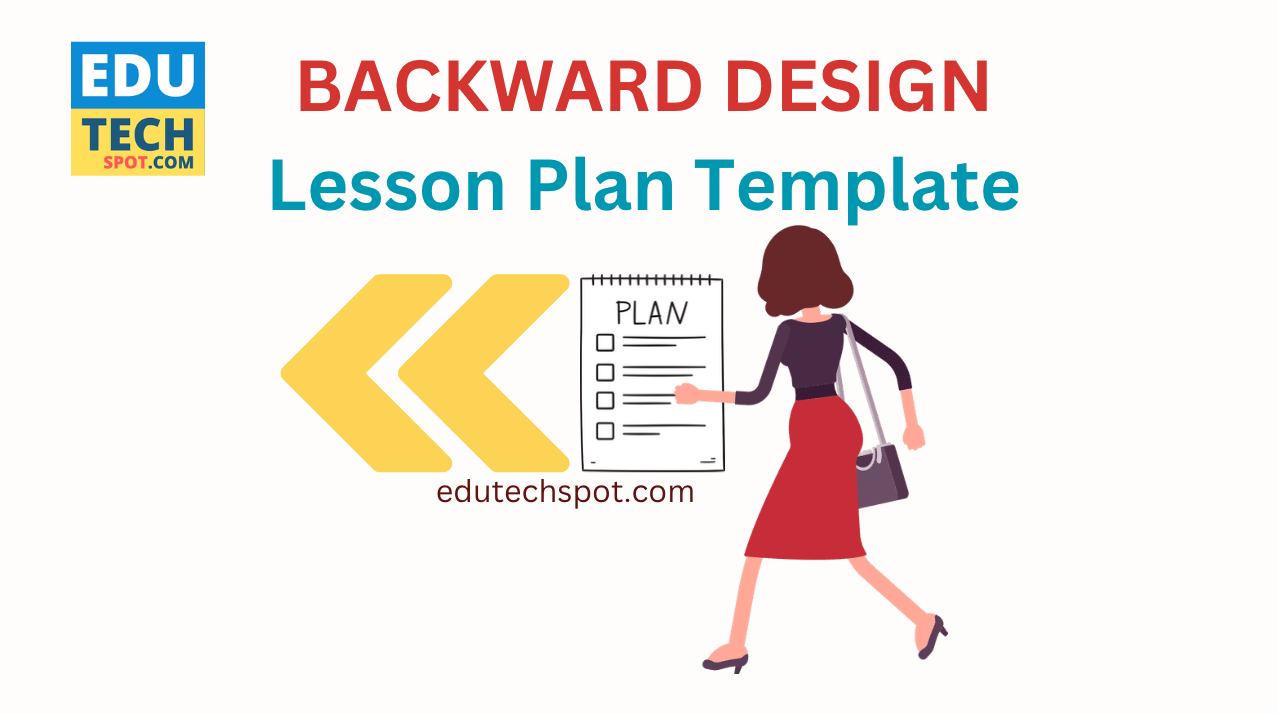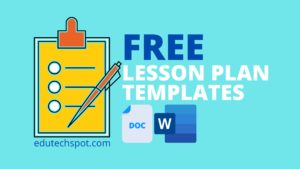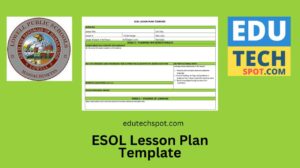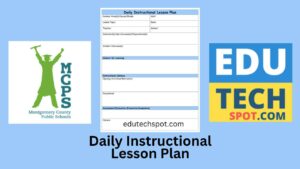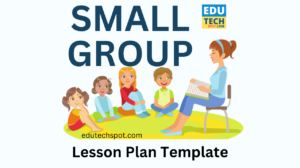Backward Design Lesson Plan Template that you can use for free. In my opinion, and based on what I have read from different sources, the curriculum development method known as backward design begins with setting educational objectives and subsequently tailors assessment and instruction to meet those goals. Instructors engage in backward mapping, a planning process where assignments and lessons are crafted to attain predetermined instructional objectives. If you need to use some templates, here are they:
Editable Backward Design Lesson Plan Template Files in Microsoft Word Format to Download
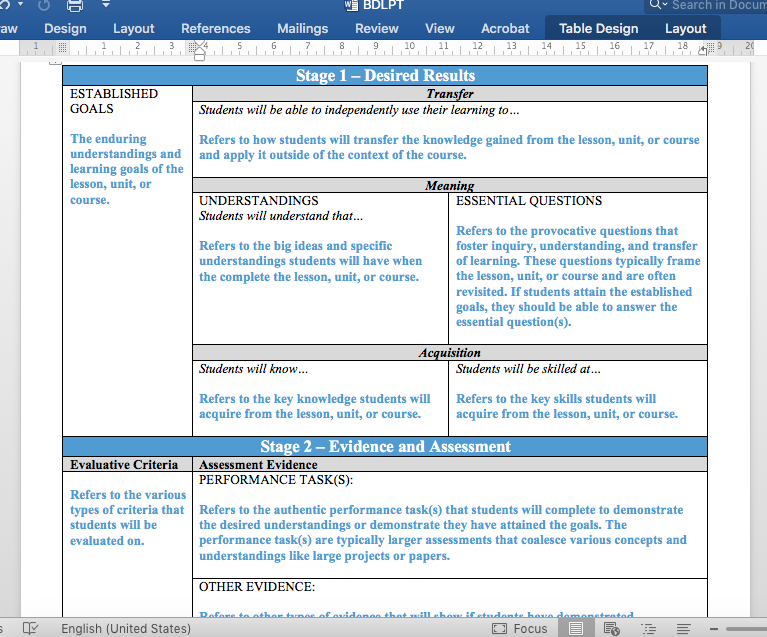
In this lesson plan, the first stage emphasizes established goals, encompassing enduring understandings and learning objectives. The Transfer component outlines how students will independently apply acquired knowledge beyond the immediate context. Meaning focuses on key understandings, while Essential Questions provoke inquiry and facilitate understanding. Acquisition emphasizes the knowledge gained, and the “Students will be skilled at…” section identifies essential skills to be acquired.
Moving to the second stage, the focus is on evaluative criteria and assessment evidence. Performance Task(s) refer to authentic assessments that consolidate concepts and understandings. Other Evidence includes quizzes, tests, and homework, and the incorporation of self-assessments and student reflections adds depth to the assessment process.
The third stage, the Learning Plan, summarizes key learning events and instructional strategies. This encompasses lectures, discussions, problem-solving sessions, providing a roadmap for teachers to ensure alignment with the desired results and assessment methods.
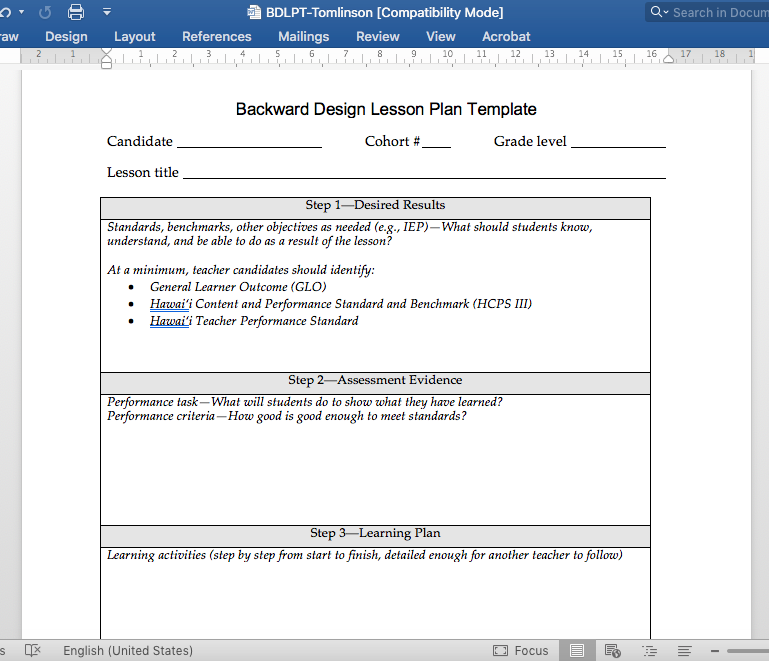
The Backward Design Lesson Plan Template is a structured framework for teacher candidates, providing a systematic approach to lesson planning. The document includes essential components such as the candidate’s information, cohort number, and grade level. The lesson title is also specified, establishing a clear reference point for the planned instructional content.
Step 1—Desired Results: This step prompts teacher candidates to identify the standards, benchmarks, and objectives relevant to the lesson. The template emphasizes including the General Learner Outcome (GLO), Hawai‘i Content and Performance Standard and Benchmark (HCPS III), and Hawai‘i Teacher Performance Standard. These elements collectively define what students should know, understand, and be able to do as a result of the lesson.
Step 2—Assessment Evidence: The template guides candidates in developing performance tasks and criteria for assessing student learning. It encourages a clear connection between assessment strategies and the identified standards and benchmarks. This step is critical for evaluating how well students meet the established criteria.
Step 3—Learning Plan: In this section, teacher candidates outline the learning activities step by step, ensuring sufficient detail for another teacher to follow. This detailed plan ensures clarity in the execution of the lesson, fostering a consistent and comprehensive learning experience.
Step 4—Reflection: After the lesson is delivered, the template prompts reflection on the teaching experience. Teachers are encouraged to consider what happened during the lesson, what students learned, and how this knowledge is determined. Furthermore, candidates are asked to reflect on personal learning and identify areas for improvement in future lessons.
The template incorporates Tools for Assessment, providing a comprehensive list of assessment tools categorized into written, oral, visual, and kinesthetic formats. Examples include essays, oral presentations, visual displays, and kinesthetic activities. This diverse set of tools allows for flexibility in assessment methods based on the nature of the lesson and learning objectives.
The document concludes with a scoring guide for ACEI Assessment 3, evaluating the candidate’s ability to plan instruction. The rubric assesses lesson content, the ability to plan, alignment of assessment with the plan, instruction methods, and reflection. It employs a three-tiered scale—Unacceptable, Acceptable, and Target—to gauge the quality of the lesson planning, with a focus on meeting standards, engaging students, and fostering reflective teaching practices. This scoring guide ensures a consistent evaluation of lesson plans within the teacher education program.
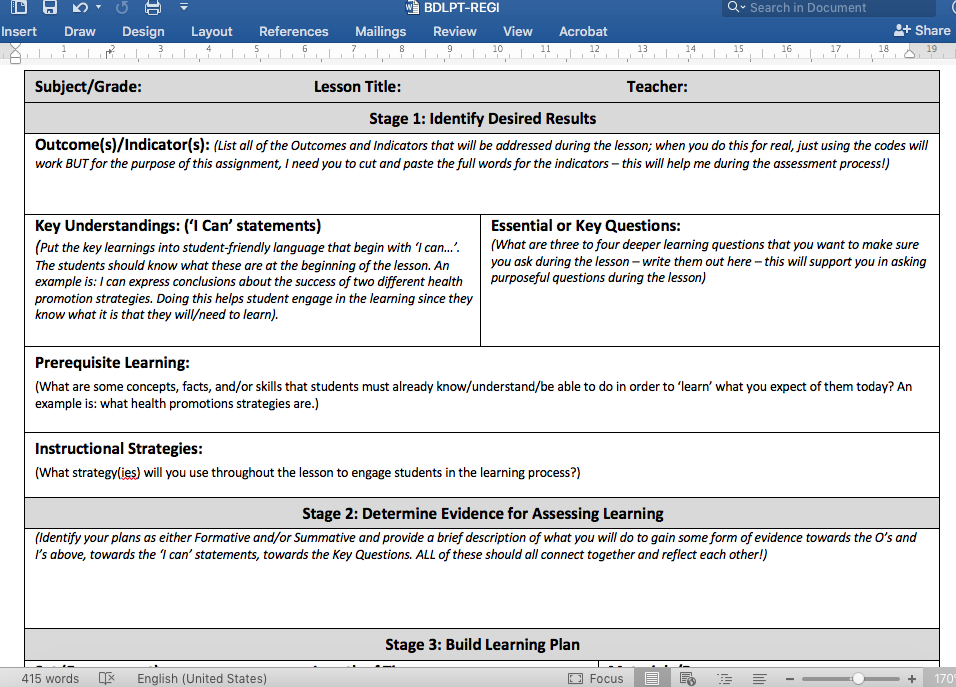
The Backward Design Lesson Plan begins with the identification of desired results in Stage 1. In this section, the teacher outlines the specific outcomes and indicators that the lesson aims to address. Notably, for the purpose of assessment, the full words for indicators are included, departing from the conventional use of codes. Key understandings are translated into student-friendly language through ‘I Can’ statements, such as, “I can express conclusions about the success of two different health promotion strategies.” Essential questions are also crafted to provoke deeper learning, with examples like, “How do different health promotion strategies impact success?”
The prerequisite learning section highlights the foundational knowledge or skills students should possess before engaging in the lesson. In this case, students are expected to have a grasp of what health promotion strategies entail. Instructional strategies encompass a mix of group discussions, case studies, and visual aids, ensuring an interactive and engaging learning process.
Moving to Stage 2, the focus shifts to determining evidence for assessing learning. Both formative and summative assessments are outlined, aligning with the identified outcomes, indicators, ‘I Can’ statements, and essential questions. The formative assessment involves observing students’ contributions during group discussions, while the summative assessment requires students to submit a written analysis expressing their conclusions about the success of health promotion strategies.
Stage 3 outlines the learning plan, commencing with the engagement phase. The set activities aim to capture students’ attention, laying the groundwork for what they will learn. The development phase, which forms the core of the lesson, aligns with the identified outcomes and indicators. Visual aids and case studies are employed to facilitate understanding. The learning closure involves a ‘check for understanding,’ with a quiz or discussion prompting students to articulate what they’ve learned.
Materials and resources, possible adaptations, differentiation, management strategies, and safety considerations are all meticulously considered, providing a comprehensive plan for executing the lesson.
Stage 4, the reflection stage, is post-lesson and serves as a crucial component of the template. Here, the teacher assesses the lesson’s effectiveness, identifies what worked well, notes areas for improvement, and considers adjustments for future implementations. It serves as a reflective tool to refine and enhance teaching practices.
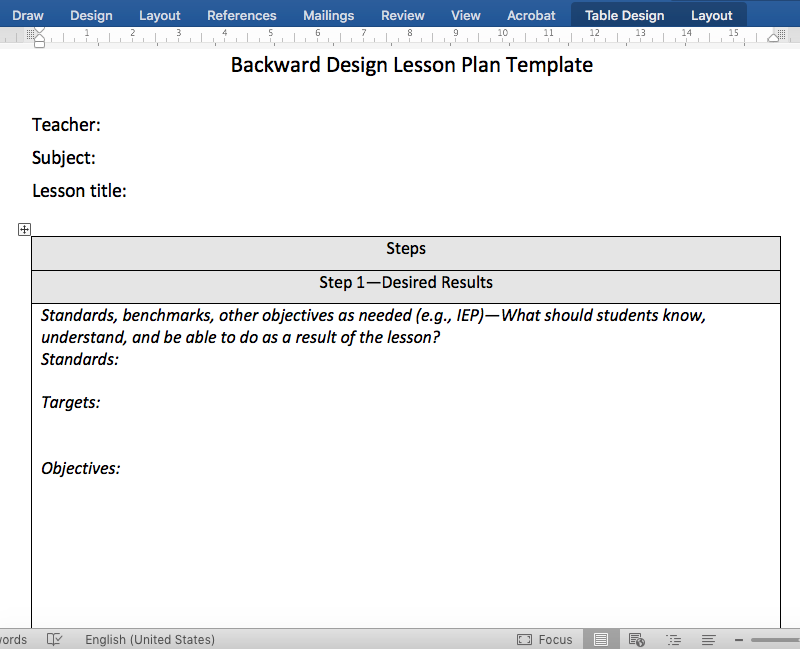
This Backward Design Lesson Plan Template guides teachers through a comprehensive four-step process: Desired Results, Assessment Evidence, Learning Plan, and Reflection. The language used is straightforward, making it easily understandable.
In the “Desired Results” section, teachers are prompted to identify the standards, benchmarks, and objectives, including IEP considerations. It emphasizes what students should know, understand, and be able to do as a result of the lesson, providing clarity through specific standards, targets, and objectives.
Moving on to “Assessment Evidence,” the template directs attention to evaluating student understanding. Performance tasks, performance criteria, and summative assessments are outlined, helping determine how well students have met the established standards. The criteria for meeting these standards are made explicit, ensuring a clear understanding of expectations.
The “Learning Plan” section is detailed and thorough, offering a step-by-step guide for teaching the lesson. The instructions are clear enough for another teacher to follow, providing a framework for effective implementation of the lesson plan.
Following the lesson, the “Reflection” section prompts teachers to analyze the teaching process. Questions guide reflection on what transpired during the lesson, what students learned, and how the teacher can assess the attainment of objectives. It encourages a thoughtful consideration of personal learning and improvements to be made in future lessons.
The “Tools for Assessment” section provides a diverse array of assessment tools, categorized into written, oral, visual, and kinesthetic formats. Examples include journals, oral presentations, diagrams, field trips, and various project-related methods such as advertisements, brochures, charts, and community outreach. This variety allows for flexibility in choosing assessment methods based on the nature of the lesson and the learning objectives.
